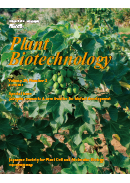Volume 29, Issue 2
Displaying 1-11 of 11 articles from this issue
- |<
- <
- 1
- >
- >|
Preface
-
Article type: Preface
2012 Volume 29 Issue 2 Pages 121-
Published: June 25, 2012
Released on J-STAGE: July 10, 2012
Download PDF (110K)
Original Paper
-
Article type: Original Paper
2012 Volume 29 Issue 2 Pages 123-130
Published: June 25, 2012
Released on J-STAGE: July 10, 2012
Advance online publication: June 15, 2012Download PDF (982K)
Note
-
Article type: Note
2012 Volume 29 Issue 2 Pages 131-135
Published: June 25, 2012
Released on J-STAGE: July 10, 2012
Advance online publication: June 15, 2012Download PDF (2950K)
Original Paper
-
Article type: Original Paper
2012 Volume 29 Issue 2 Pages 137-143
Published: June 25, 2012
Released on J-STAGE: July 10, 2012
Advance online publication: June 10, 2012Download PDF (3998K) -
Article type: Original Paper
2012 Volume 29 Issue 2 Pages 145-153
Published: June 25, 2012
Released on J-STAGE: July 10, 2012
Advance online publication: June 15, 2012Download PDF (10711K) -
Article type: Original Paper
2012 Volume 29 Issue 2 Pages 155-162
Published: June 25, 2012
Released on J-STAGE: July 10, 2012
Advance online publication: June 15, 2012Download PDF (4019K) -
Article type: Original Paper
2012 Volume 29 Issue 2 Pages 163-170
Published: June 25, 2012
Released on J-STAGE: July 10, 2012
Advance online publication: June 20, 2012Download PDF (2104K)
Note
-
Article type: Note
2012 Volume 29 Issue 2 Pages 171-174
Published: June 25, 2012
Released on J-STAGE: July 10, 2012
Advance online publication: June 15, 2012Download PDF (1039K) -
Article type: Note
2012 Volume 29 Issue 2 Pages 175-178
Published: June 25, 2012
Released on J-STAGE: July 10, 2012
Advance online publication: June 10, 2012Download PDF (5630K) -
Article type: Note
2012 Volume 29 Issue 2 Pages 179-183
Published: June 25, 2012
Released on J-STAGE: July 10, 2012
Advance online publication: June 15, 2012Download PDF (581K) -
Article type: Note
2012 Volume 29 Issue 2 Pages 185-189
Published: June 25, 2012
Released on J-STAGE: July 10, 2012
Advance online publication: June 15, 2012Download PDF (4809K)
- |<
- <
- 1
- >
- >|
